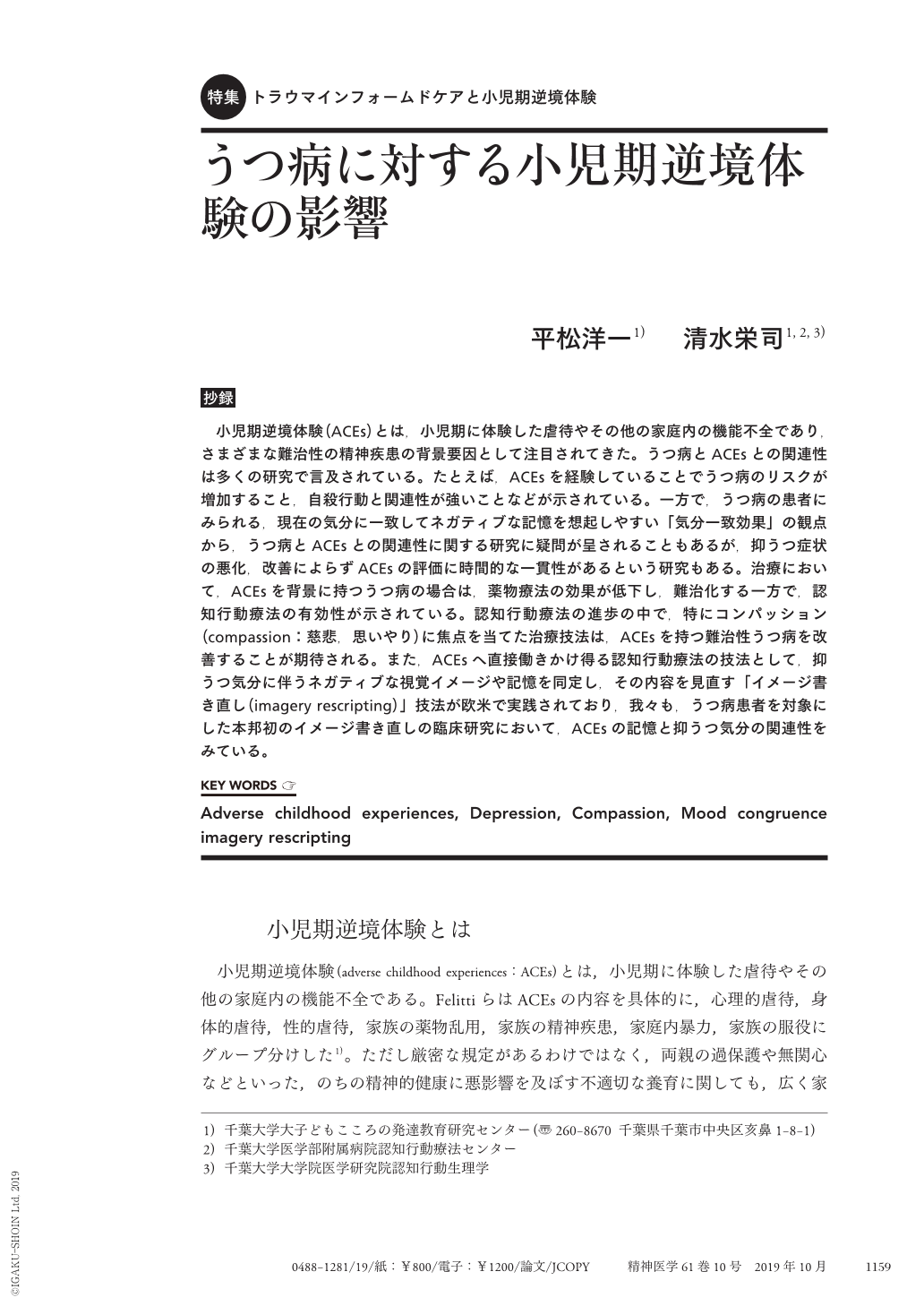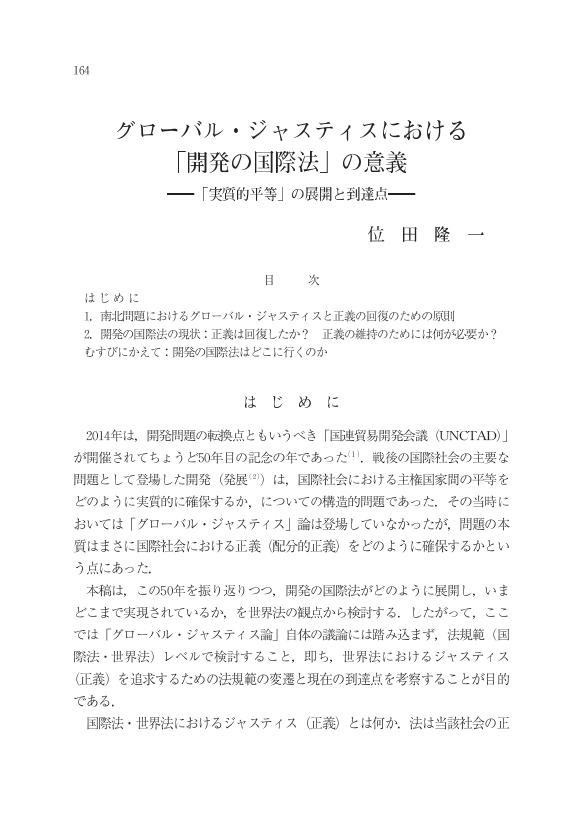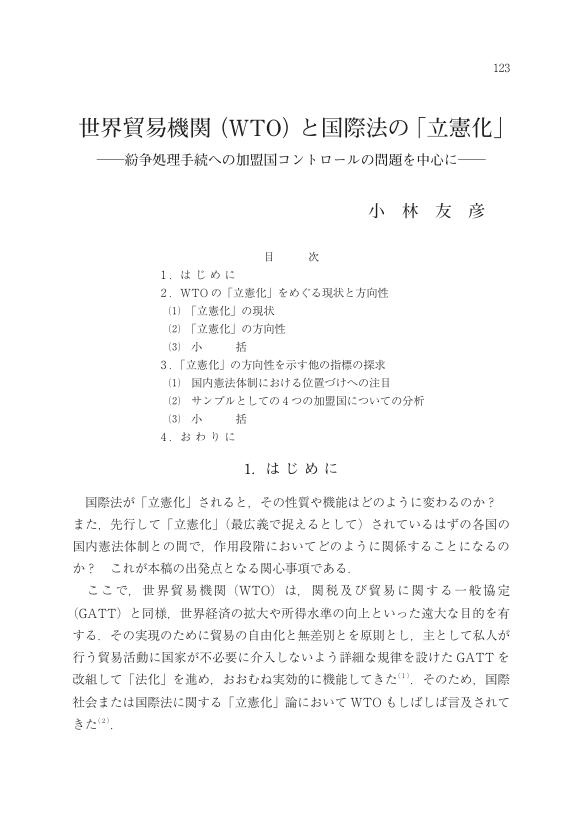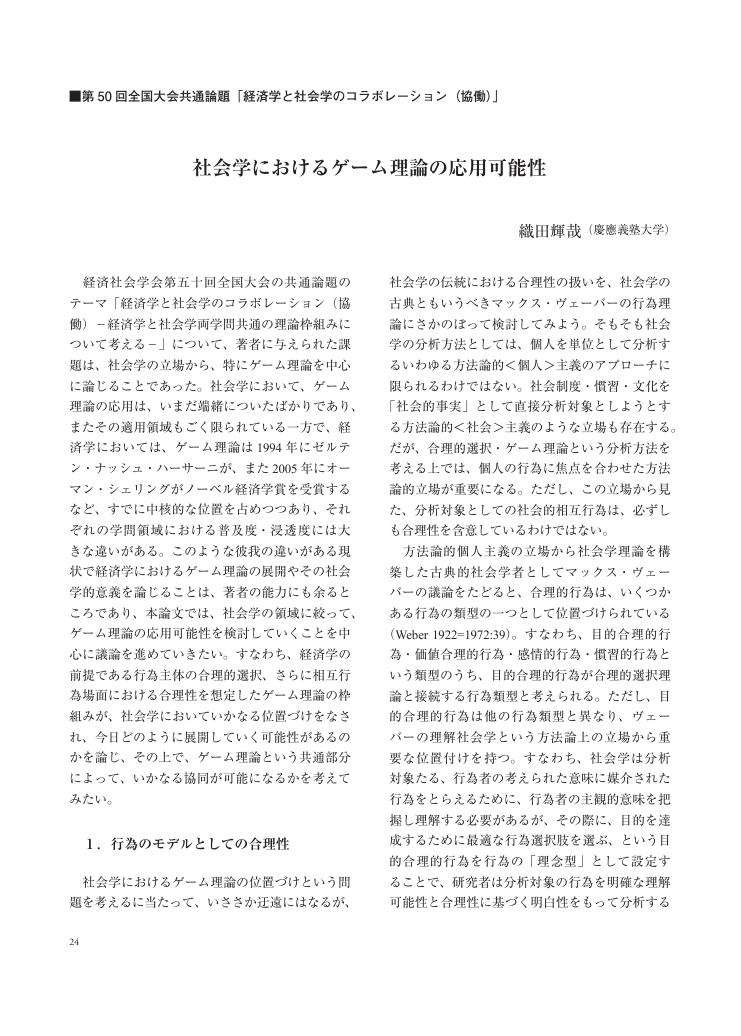2 0 0 0 OA シャリーアの救済論的意味
- 著者
- 小田 淑子
- 出版者
- 宗教哲学会
- 雑誌
- 宗教哲学研究 (ISSN:02897105)
- 巻号頁・発行日
- vol.8, pp.36-51, 1991 (Released:2018-03-21)
The literal meaning of the Sharî‘ah, usually rendered as Islamic law, is the Path which God ordained for believers. This spiritual Path became highly articulated into various rules, such as ritual, moral and even legal rules, in the course of the early Islamic history. This article intends to elucidate the soteriological meaning of the Sharî‘ah in Islam. This is primarily clarified in relation to the basic soteriology exposed in the Qur’ân. The concept of faith in the Qur’ân means to be guided by God to the Path in this world till the Day of Resurrection in the future, rather than the liberation from the original sin done in the mythical past. The other concept, ummah,is the crucial key-term to understand the reason for the precise articulation of the Path. Being a genuine religious community, it never leaves out the socio-political sphere necessary for human life, where Muslims raise their family and live by economic activities. A believer who is, as the solitary one, faced with God cannot but live in, and also is responsible for, the Ummah in this world. Therefore, the Path necessarily contains many social rules. Among several types of the Qur’anic discourses, the narrative of the eschatology most impressively reminds man of the transcendent dimension where man is ever faced with God. It is the fear of the eschatological Judgment that makes man realize both the vanity of this-worldly life and the true significance of his temporary action, making man aware of his own sins. And God forgives man who repents. The Qur’ân keenly and concretely points out man’s intrinsic weakness or propensity to evil in the fact that man does not only commit sins but often evades selfawareness of his sins. God sets the Sharî‘ah for fallible Muslims to live in the Ummah. Without the sharî‘ah, the Ummah could not be maintained, and hence Muslims could not exist in history in a full sense. For the Sharî‘ah may remind Muslims of God at every moment of action, and bring them back from forgetfulness of God to faith.
2 0 0 0 OA パスカルの回心論
- 著者
- 宮永 泉
- 出版者
- 宗教哲学会
- 雑誌
- 宗教哲学研究 (ISSN:02897105)
- 巻号頁・発行日
- vol.6, pp.71-84, 1989 (Released:2018-03-19)
À la veille de sa conversion définitive, Pascal prit conscience du péché qui habitait en lui, comme Paul dans l’Épître aux Romains (Ⅶ). La conception des 《contrariétés》dans l’Entretien de Pascal avec Saci est l’expression philosophique de cette conscience et la conception de la《confusion》dans son traité : Sur la conversion du pécheur est l’expression psychologique de cette même conscience. Selon Pascal, dans ce dernier traité, l’homme peut se tirer de l’abîme de《confusion》 par trois moyens : la raison, l’habitude et les charmes. Le premier moyen est de considérer toutes les choses de ce monde comme périssantes et même déjà péries et, après quoi, de faire en sorte que Dieu (le vrai bien qui a ces deux qualités, l’éternité et la félicité) se manifeste à l’âme, par 《sa raison aidée de la lumière de la grâce》. Le deuxième moyen est de se soumettre à 《l’habitude dans la piété》comme nous le faisons dans la messe ou les prières. Le troisième moyen est de goûter《ces charmes》que la grâce au sens étroit du terme donne à l’âme. Il est évident que ces trois moyens de se convertir sont les arché-types des《trois moyens de croire : la raison, la coutume, l’inspiration》tels qu’ils sont exprimés dans les Pensées (L. 808-Br. 245).
2 0 0 0 OA 1801年のヘーゲル
- 著者
- 中島 秀憲
- 出版者
- 宗教哲学会
- 雑誌
- 宗教哲学研究 (ISSN:02897105)
- 巻号頁・発行日
- vol.4, pp.55-68, 1987 (Released:2018-03-15)
Der größte Teil der Schriften Hegels vor dem Jahre 1800 ist theologisch, während die Schriften nach dem Jahre 1801 philosophisch sind. Das Jahr 1801 kann als Wendepunkt Hegels “von der Religion zur Philosophie” gesehen werden. Doch ist dieser Schritt keine Abwendung von der Religion, sondern die Vollendung der “wahrhaften Religion.” Aber diese Vollendung ist nicht der gerade Weg von der “schönen Religion Jesu in den theologischen Schriften” zur “wahrhaften Religion”. Dazwischen gibt es eine qualitative Differenz. Die “schöne Religion Jesu” kann nicht sich mit der Reflexion versöhnen. Hingegen kann die “wahrhafte Religion” durch die Bewegung der Reflexion, in der die Reflexion sich in der Antinomie vernichtet und zur Vernunft zurückkehrt, vollendet werden.
2 0 0 0 OA クザーヌスにおける〈人間〉の問題
- 著者
- 薗田 坦
- 出版者
- 宗教哲学会
- 雑誌
- 宗教哲学研究 (ISSN:02897105)
- 巻号頁・発行日
- vol.4, pp.1-20, 1987 (Released:2018-03-15)
Die Frage nach dem “Menschen” bei Nikolaus von Cues wird hauptsächlich in zwei verschiedenen Hinsichten in seinen theologisch-philosophischen Schriften gestellt, nämlich einmal im dritten Buch der “De docta ignorantia” (1440) und zum anderen in der Schrift “Idiota de mente” (1450). In der erstgenannten Schrift wird der Mensch grundsätzlich im metaphysischen Zusammenhang mit Gott (maximum absolutum) und der Welt (maximum contractum) betrachtet und muß selber als “maximum contractum et absolutum” in die vermittelnde Stellung zwischen diesen beiden “maxima” eingeordnet werden. Nikolaus versucht diese Möglichkeit des Menschen in der vollendeten Menschlichkeit Jesu aufzusuchen und festzumachen, indem er die Idee des Menschen(humanitas) mit der Christus-Idee als “Gott-Mensch” zur Deckung zu bringen versucht und daraus folgend Jesus Christus für den einzig “wahren Menschen” ansieht. Dies führt dazu, daß die Anthropologie letztendlich in die Christologie zurückgeführt wird. In der zweiten Schrift wird der Mensch dagegen als Geist (mens) aufgefaßt und besonders wird seine Vernünftigkeit betont. Da der Geist aber zugleich als Bild Gottes (imago Dei) angesehen und diese Ebenbildlichkeit im Sinne der Gleichheit (aequalitas) mit Gott (unitas) interpretiert wird, wird der Mensch als Geist hier wiederum zu einer Stellung erhöht, die beinahe dem Sohne Gottes in der göttlichen Trinität entspricht. Der menschliche Geist hat von daher seine Entsprechung zu dem alle Dinge aus sich ausfaltenden (schöpferischen) Gott darin, daß er auf seine Weise (nämlich auf dem Wege der Erkenntnis) Nachbilder aller Dinge ausbilden kann. In beiden geschilderten Zusammenhängen spielt der Mensch jedenfalls die entscheidende, vermittelnde Rolle zwischen Gott und der Welt (allen Dingen). Man kann diese umfangreiche Bedeutsamkeit des Menschen im Denken des Cusaners dadurch auffinden, daß man die von der Christologie bis zur Geisteslehre entwikkelten Probleme unter dem leitenden Gesichtspunkt des “Menschen” zusammenschaut.
2 0 0 0 OA ニーチェにおける「ましな人間(der höhere Mensch)」と肯定の問題
- 著者
- 中路 正恒
- 出版者
- 宗教哲学会
- 雑誌
- 宗教哲学研究 (ISSN:02897105)
- 巻号頁・発行日
- vol.3, pp.68-80, 1986 (Released:2018-03-14)
Higher Men are insufficient because they do not realize the nature of affirmation― for true affirmation is inseparable from that negation which negates those negative values which are created by the “will to nothing”. Therefore the affirmation conceived by them is merely an abstract image of true affirmation. True affirmation finds its power in the affirmability of life itself revealed in the experience lived of the “eternal return”. This affirmability of life itself is called Dionysos, and the affirmation that affirms Dionysos finds its principle in Ariadne, while the “eternal return” signifies the wedding ring between these divinities.
2 0 0 0 うつ病に対する小児期逆境体験の影響
抄録 小児期逆境体験(ACEs)とは,小児期に体験した虐待やその他の家庭内の機能不全であり,さまざまな難治性の精神疾患の背景要因として注目されてきた。うつ病とACEsとの関連性は多くの研究で言及されている。たとえば,ACEsを経験していることでうつ病のリスクが増加すること,自殺行動と関連性が強いことなどが示されている。一方で,うつ病の患者にみられる,現在の気分に一致してネガティブな記憶を想起しやすい「気分一致効果」の観点から,うつ病とACEsとの関連性に関する研究に疑問が呈されることもあるが,抑うつ症状の悪化,改善によらずACEsの評価に時間的な一貫性があるという研究もある。治療において,ACEsを背景に持つうつ病の場合は,薬物療法の効果が低下し,難治化する一方で,認知行動療法の有効性が示されている。認知行動療法の進歩の中で,特にコンパッション(compassion:慈悲,思いやり)に焦点を当てた治療技法は,ACEsを持つ難治性うつ病を改善することが期待される。また,ACEsへ直接働きかけ得る認知行動療法の技法として,抑うつ気分に伴うネガティブな視覚イメージや記憶を同定し,その内容を見直す「イメージ書き直し(imagery rescripting)」技法が欧米で実践されており,我々も,うつ病患者を対象にした本邦初のイメージ書き直しの臨床研究において,ACEsの記憶と抑うつ気分の関連性をみている。
2 0 0 0 OA グローバル・ジャスティスにおける「開発の国際法」の意義
- 著者
- 位田 隆一
- 出版者
- 世界法学会
- 雑誌
- 世界法年報 (ISSN:09170421)
- 巻号頁・発行日
- vol.34, pp.164-187, 2015-03-28 (Released:2017-11-22)
- 著者
- 小林 友彦
- 出版者
- 世界法学会
- 雑誌
- 世界法年報 (ISSN:09170421)
- 巻号頁・発行日
- vol.33, pp.123-148, 2014-03-28 (Released:2017-11-22)
2 0 0 0 OA ヨーロッパ人権裁判所の判例にみる人権と多文化主義との相克
- 著者
- 北村 泰三
- 出版者
- 世界法学会
- 雑誌
- 世界法年報 (ISSN:09170421)
- 巻号頁・発行日
- vol.29, pp.86-123, 2010-03-28 (Released:2017-11-22)
2 0 0 0 OA 国連による紛争処理システムの構造と課題 20世紀の普遍的国際組織による紛争処理機能再考
- 著者
- 植木 俊哉
- 出版者
- 世界法学会
- 雑誌
- 世界法年報 (ISSN:09170421)
- 巻号頁・発行日
- vol.2004, no.23, pp.46-74, 2004-02-28 (Released:2011-02-07)
- 参考文献数
- 22
2 0 0 0 OA 接続水域
- 著者
- 村上 暦造
- 出版者
- 世界法学会
- 雑誌
- 世界法年報 (ISSN:09170421)
- 巻号頁・発行日
- vol.1998, no.17, pp.44-62, 1998-03-20 (Released:2011-02-07)
- 参考文献数
- 21
2 0 0 0 OA 国際海洋法秩序の50年
- 著者
- 小田 滋
- 出版者
- 世界法学会
- 雑誌
- 世界法年報 (ISSN:09170421)
- 巻号頁・発行日
- vol.1998, no.17, pp.1-25, 1998-03-20 (Released:2011-02-07)
- 参考文献数
- 13
2 0 0 0 資源からみた成長の限界への挑戦
- 著者
- 瀬川 滋
- 出版者
- 学校法人 天満学園 太成学院大学
- 雑誌
- 太成学院大学紀要 (ISSN:13490966)
- 巻号頁・発行日
- vol.17, pp.125-132, 2015
今から約40年前にローマクラブから,人口,工業化,汚染,資源等の成長率がそれまでの状態が続くなら,100年以内に地球は破綻するということが報告され,世に大きな反響をもたらしたが,これを我が国の資源の観点から検証している。我が国が経済的権益を有する海域には,石油・天然ガス,海底熱水鉱床,コバルトリッチ・クラスト,メタンハイドレード等資源が眠っており,将来の実用化が期待されている。その実現には時間がかかりそうだが,それまでの間は太陽熱,地熱,燃料電池等の活用と,今まで見捨てられていた都市鉱山,バイオマス発電,CLT(クロス・ラミネイティッド・ティンバー)等の利用を図れば破綻は当分考えられそうもない。
2 0 0 0 OA 平和維持と国際連合のあり方 「新たなビジョン: 明日の国連」を手かがりにして
- 著者
- 小寺 彰
- 出版者
- 世界法学会
- 雑誌
- 世界法年報 (ISSN:09170421)
- 巻号頁・発行日
- vol.1989, no.9, pp.7-19, 1989-10-15 (Released:2011-02-07)
- 参考文献数
- 20
2 0 0 0 OA 世界法の概念について 田中, 恒藤両博士の概念をめぐって
- 著者
- 斎藤 恵彦
- 出版者
- 世界法学会
- 雑誌
- 世界法年報 (ISSN:09170421)
- 巻号頁・発行日
- vol.1988, no.8, pp.1-16, 1988-10-15 (Released:2011-02-07)
- 参考文献数
- 11
2 0 0 0 OA 東京市立深川図書館一覧
- 出版者
- 深川図書館
- 巻号頁・発行日
- vol.第2年報, 1912
2 0 0 0 OA 現代消費社会と自由を巡る一考察
- 著者
- 市川 慧
- 出版者
- 経済社会学会
- 雑誌
- 経済社会学会年報 (ISSN:09183116)
- 巻号頁・発行日
- vol.37, pp.192-202, 2015 (Released:2016-03-25)
Though consumer society is tied up the notion of liberalism strongly, the purpose of this thesis is to reveal these placement associations. On the other hand the existence of consumer society is based on liberalism, the liberty in the consumer society provides to the consumer the wide range selection of commodity, the liberation from convention and tradition. As seen above, consumer society and liberalism are interdependence. In this way, the liberty in consumer society is recognized nearly as "negative liberty" that Isaiah Berlin said. The recognition that "the true freedom" is liberty from consumer society emerged from 1980s in Japan’s mature consumer society. But the act like anti-consumerism to flee from consumer society means obedience to some kind of consumer society’s code Jean Baudrillard said. That means every social activity is consumerism in contemporary society. Baudrillard said contemporary consumption is communication. In today’s phenomenon of consumer society that the trend of monologue consuming communication, consumption without physical exchange (like an information consumption) and obsolescence of consumer society in itself (so we don’t feel in "the cage of consumer society") brings to us subjective freedom in consumer society. But another side, nowadays, there is problem that consumer society is too free. Durkheim said that freedom is production of social regulation, and Arendt said freedom exists in positive action only. Like this, in the process of reaching true freedom in consumer society, social and public is required. It means the liberty of consumer society shifts to another dimension from the negative one. That will be "limited freedom, " but have loose relationship to others and access possibility to public.
2 0 0 0 OA 社会学におけるゲーム理論の応用可能性
- 著者
- 織田 輝哉
- 出版者
- 経済社会学会
- 雑誌
- 経済社会学会年報 (ISSN:09183116)
- 巻号頁・発行日
- vol.37, pp.24-33, 2015 (Released:2016-03-25)









